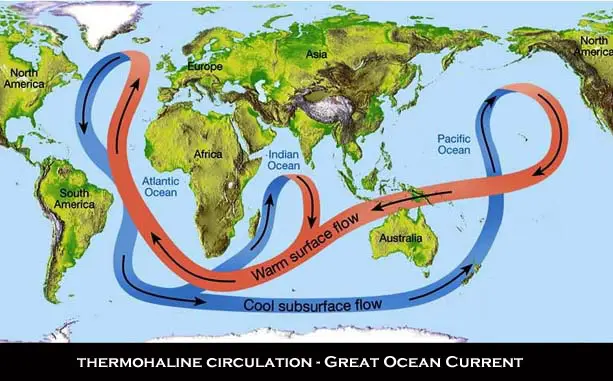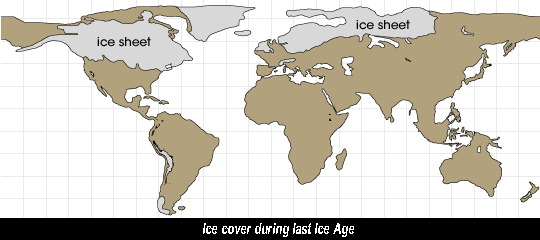All life on earth ultimately depends on the oceans, which cover 71 per cent of the planet. These vast basins of water provide most of the oxygen in our atmosphere, and microscopic plants absorb millions of tons of carbon dioxide each day. This watery region is also home to the coral reefs which are extremely important for biodiversity, providing habitats to over 25% of all marine life. ( Coral bleaching is threatening many of the world’s coral reefs which could be killed within our lifetime.)
The seas also hold a precious food resource, providing 80 million metric tons of food a year through fishing. Climate-related variations in marine-coastal environments are recognised as playing an important role in determining the productivity of several North American fisheries in the Pacific, North Atlantic, Bering Sea, and Gulf of Mexico regions. These are complex systems in themselves, and they already being affected by increased acidity and other complex ways by human activities.
Freshening of waters from increased Arctic runoff and increased rainfall, melt of Antarctic ice shelves, and reduced sea-ice formation will slow the thermohaline circulations of the North Atlantic and Southern Oceans and reduce the ventilation of deep waters. The thermohaline circulation is sometimes called the global conveyor belt, or, the meridional overturning circulation.

Unlike the atmosphere, which is characterized by turbulent weather systems, the deep waters are fairly stable. This is because it is heated from above, in contrast to the atmosphere, which is heated from below. However, the Earth’s climate system has sensitive thresholds and pushed past a threshold, the system can jump quickly from one stable operating mode to a completely different one. To help understand this sudden move from one state to another, consider turning off a light switch. The slowly increasing pressure of a finger pushes on the switch until it flips over and immediately plunges the room into darkness.
Salinity and sea temperature are the major drivers powering the great conveyor system. If salinity content is altered (melt water from poles) and global temperature increases unabated, then the flow of these great currents will change, or may even stall. Would this be enough to turn the Earth into a snowball? The conveyor belt straddles the globe and keeps Northern Europe unusually warm for its latitude. The Gulf Stream is one leg of this current system. It functions to transfer heat from the relatively warm tropics to the relatively cold Polar Regions. The conveyor-belt-like ocean current brings the extra heat received by Northern Europe.
The importance of the conveyor to climate is impossible to overstate. Without its moderating influence on the climate of Europe, Paris would have roughly the same climate as the Hudson Bay. If the great conveyor system slows too much, we would return to conditions similar to those of the last Ice Age, and much of the Northern Hemisphere would freeze.

Scientists from the National Oceanography Centre in Britain, measured sea temperature, currents and other conditions across the Atlantic from the Bahamas to Africa in 2006 and found a 30 percent drop in the flow of warming waters since a similar set of measurements were taken in 1957.
Changes in surface and deep sea circulation can disrupt the hydrological cycle on a global scale, causing flooding and long-term droughts in various countries. El Niño (opposite is theLa Nina )events and rising sea levels are but a hint of how oceanic changes can dramatically affect where and how much precipitation falls throughout our planet.
